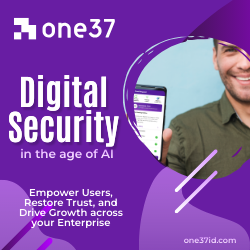The cybersecurity aspect of 5G networks has been at heart of many discussions and debates. Telecom Review spoke to Rupesh Chokshi, Vice President, Cybersecurity, AT&T to know more about the operator’s take on this subject.
The new normal introduced by the COVID-19 pandemic has definitely brought challenges, including security-related ones. What is your take on this subject and how did AT&T address the security challenge?
The pandemic tested the network resiliency of organizations as they needed to shift overnight to a remote work business model. With this shift, the rush to deploy digital and cloud solutions to maintain business continuity created new and heightened cyber risk concerns with unsecured connectivity to Internet and web-based applications, personal laptops and devices being used for work, increased potential attack surfaces, and cloud misconfigurations from lack of security controls, processes and expertise.
At the same time, cyber threats have continued to evolve, causing major disruptions across industries from DDoS and phishing attacks to ransomware. DDoS attacks, in particular, have increased for our customers. They are getting more powerful and complex.
Throughout the pandemic, we have been helping customers to protect their networks by adapting to changing workplace conditions to preserve business continuity. Examples of this include providing the AT&T Global Security Gateway service at no cost to help protect students from web-based threats while they were accessing wireless internet from an AT&T Center parking lot in San Antonio, Texas in coordination with the San Antonio Spurs basketball team; utilizing the AT&T DDoS Defense service to identify and mitigate DDoS extortion attacks targeting customers in the financial services and other industries as well as assist many non-subscribing customers with emergency mitigation services.
Security has been discussed quite a lot in the context of 5G network deployment. How important is it to guarantee a secure network, especially that 5G will enable mission critical use cases?
The 10th edition of the AT&T Cybersecurity Insights™ Report: 5G and the Journey to the Edge discusses the transformations global enterprises are making today in deploying 5G for competitive advantage and cybersecurity opportunities for the journey to the edge.
While 5G standards (which are dynamic as virtually all standards are) address known 4G vulnerabilities, 5G networks are being architected with more security than any previous network; however, businesses must still prepare for security threats – existing or new – and adjust cybersecurity policies and practices accordingly.
5G use cases in healthcare, manufacturing, retail and more industries are real, but organizations are not taking into consideration how to deploy them and how to help protect new endpoints, assets and applications connecting to the network. 5G is not simply a new radio upgrade or more advanced smartphone. 5G implies an adjacent investment in cloud and software-defined networks, both at the core layer and at the edge of the cellular network. How 5G and the edge are secured will ultimately come down to an organization’s unique 5G and edge use case and site type, including the architectures and which data is consumed, input, accessed, stored, and transported.
Will you focus on any specific goals in 2021?
Defending an organization’s endpoints and network against unauthorized digital access or attack is a business imperative. As a leading managed security services provider, our goal is to make it safer for businesses to innovate by delivering the ability to help safeguard digital assets, act with confidence to detect cyber threats to mitigate business impact, and drive efficiency into cybersecurity operations.
As organizations adopt new technologies this year such as 5G, we want to be their trusted advisor on the journey to cybersecurity resiliency.









